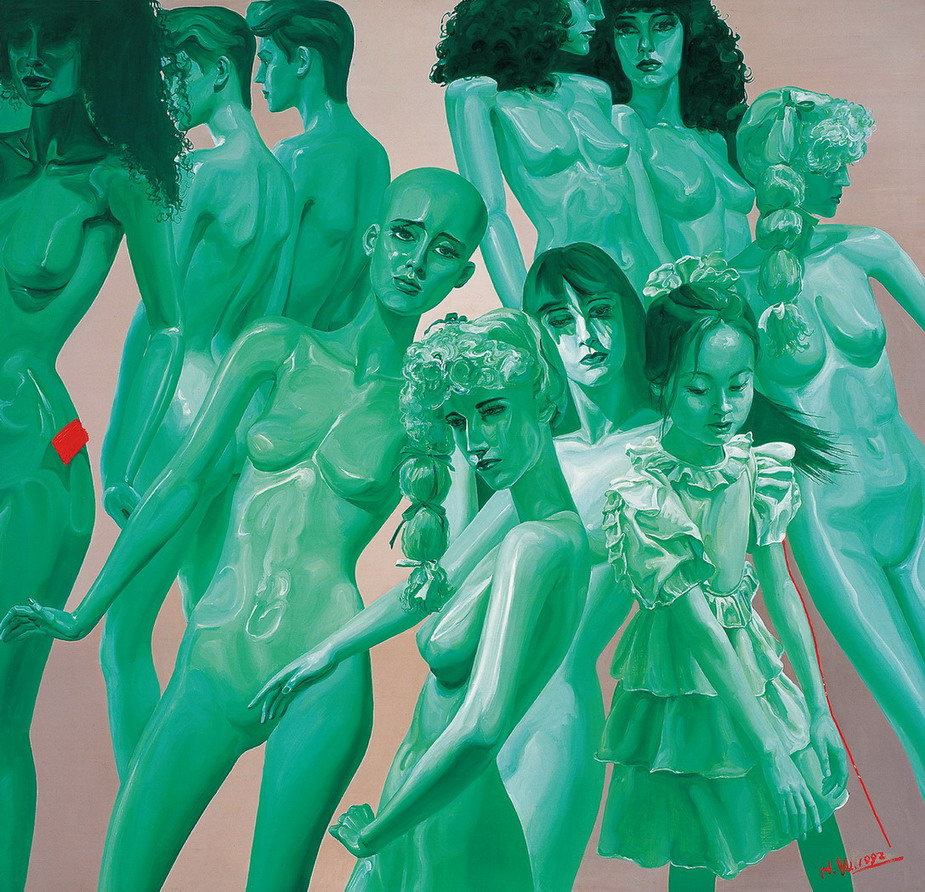The New York Academy of Art is pleased to share a new note by Hilary Harkness. Regularly posting her "Notes from Studio Lockdown," Hilary blogs with us as she prepares for her upcoming exhibition in May at Mary Boone Gallery in New York City. Follow her on this blog for sneak peeks into her studio practice!
Dear friends,
Now is a good time to give your palette a thorough cleaning and freshen your color choices for springtime.
1. Green has more possible connotations and symbolic uses than any other color. Green means go, is the color of envy, and it stands for an environmental movement. Everyone knows that if you eat a green m&m it will make you horny. As a child during the cold-war 80’s, the wisdom in my schoolyard was that as the nuclear bombs come in– best way to go out was in a bathtub full of green jello.
One of my favorite artists, Cary Liebowitz a.k.a. Candy Ass, has given a new blush of meaning to the color green: not only is it the color of indigestion, it is the color of apology.
 |
| Cary Leibowitz |
2. There are more than three ways to achieve the color green using paint. You can use a green pigment, you can mix it from blue and yellow, and you can also mix it using black and yellow. I like to juxtapose all three, as well as using color-proximity to imply that a yellow or a blue might in fact include a touch green.
Here is a riddle for students: when depicting a piece of yellow fabric, how do you keep the shadows from looking either greenish or a darker yellow? Please chime in!
A friend of mine recently was choosing a shade of green to paint her living room walls. She showed me nearly identical paint chips from different brands of paint, but the corresponding test-patches of colors on the walls were quite different. This is because of the endless ways green paint can be formulated. A more opaque pigment will make a deader color on the wall, but an uncomplicated mix of a dye color will make the room look so bright that you might wonder if martians have landed.
 |
| Ross Bleckner |
3. There are more shades of green than any other color. The color that spans the least number of shades is the color red. Artist Ellen Altfest exploits the full potential of green in many of her paintings, as you can see in this nuanced image.
 |
| Ellen Altfest |
4. A green painting is the most difficult to color-correct when reproduced photographically. It is important to carefully check that your digital image matches your real-life painting.
5. Green paintings are the least marketable. This is the word on the street. However, no art dealer I have spoken with will go on the record as having difficulty in selling anything.
 |
| Inka Essenhigh |
6. Green is the most atmospheric of any color. This seems to fly in the face of the use of blue to connote distance in Renaissance paintings, but on a sunny day, when the sky is blue, the air outside seems the clearest to me visually. There just isn’t a lot of “air” to paint.
I remember the day when I was nine years old when a tornado ripped down the main street of my town, passing only three blocks from my house. As the air raid sirens were blasting a disaster alarm, I noticed my mother was missing from the shelter of our basement. I found her on the front porch, enjoying the spectacle. The air was a satanic green as the wind picked up.
Yours very truly,
Hilary Harkness





























